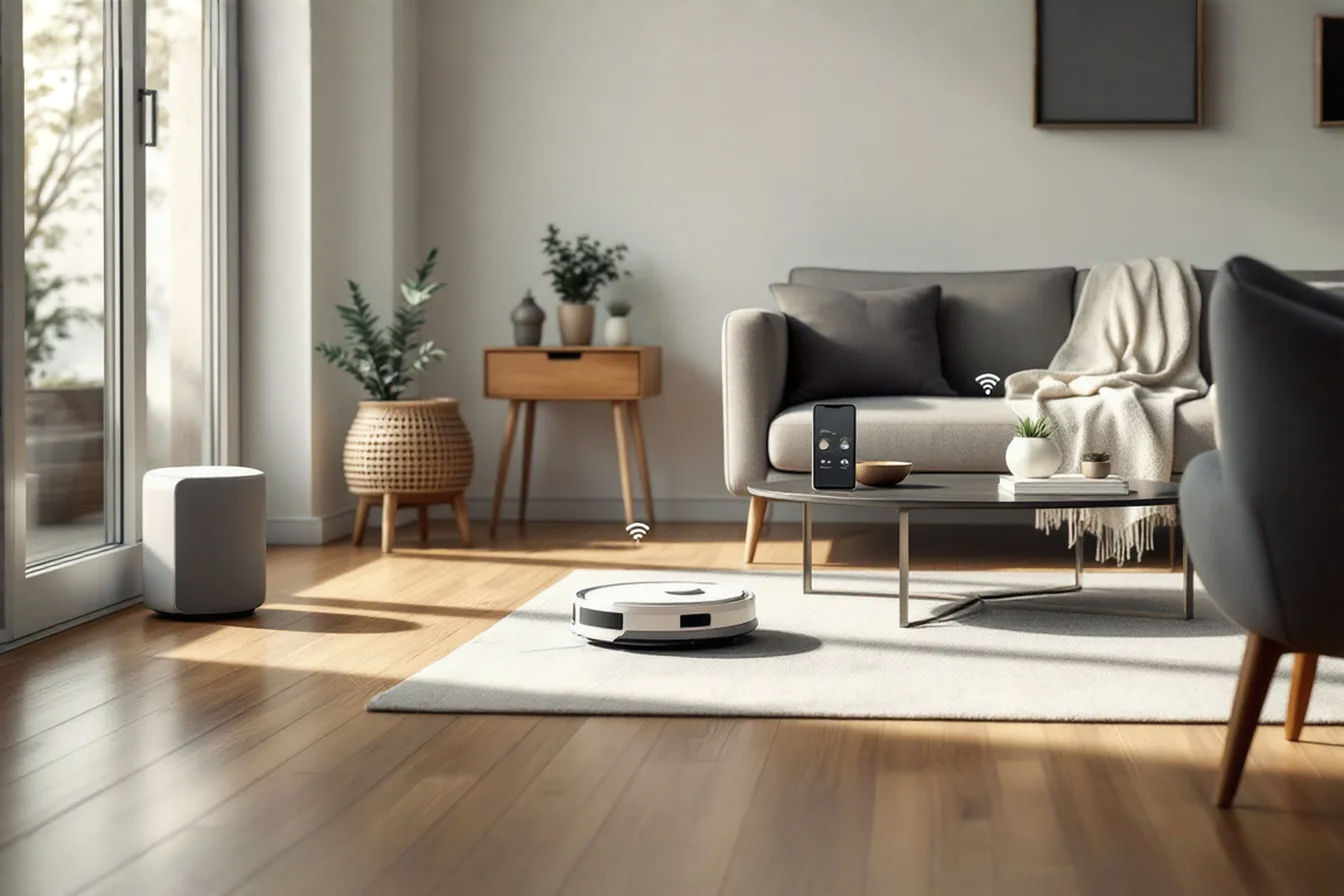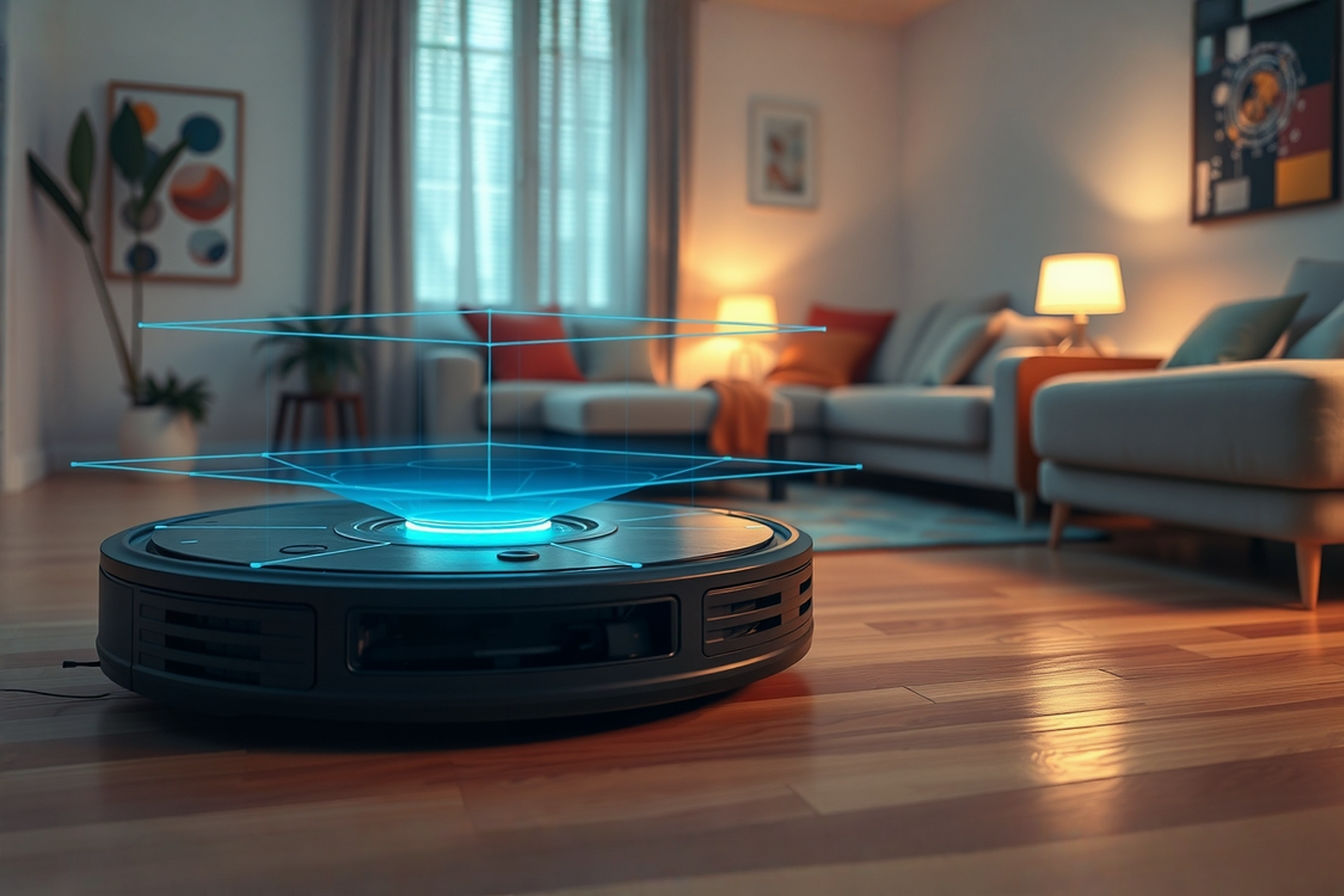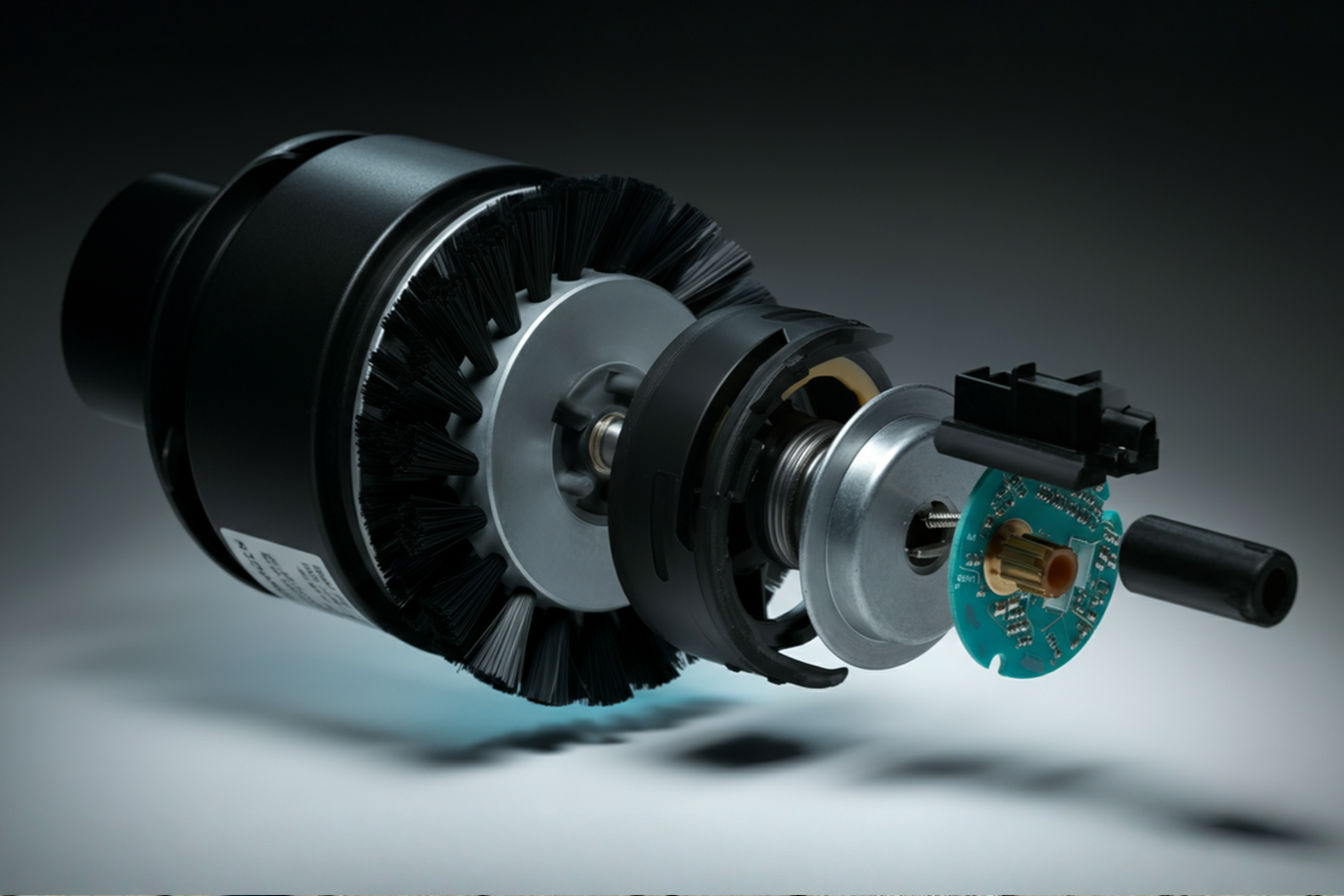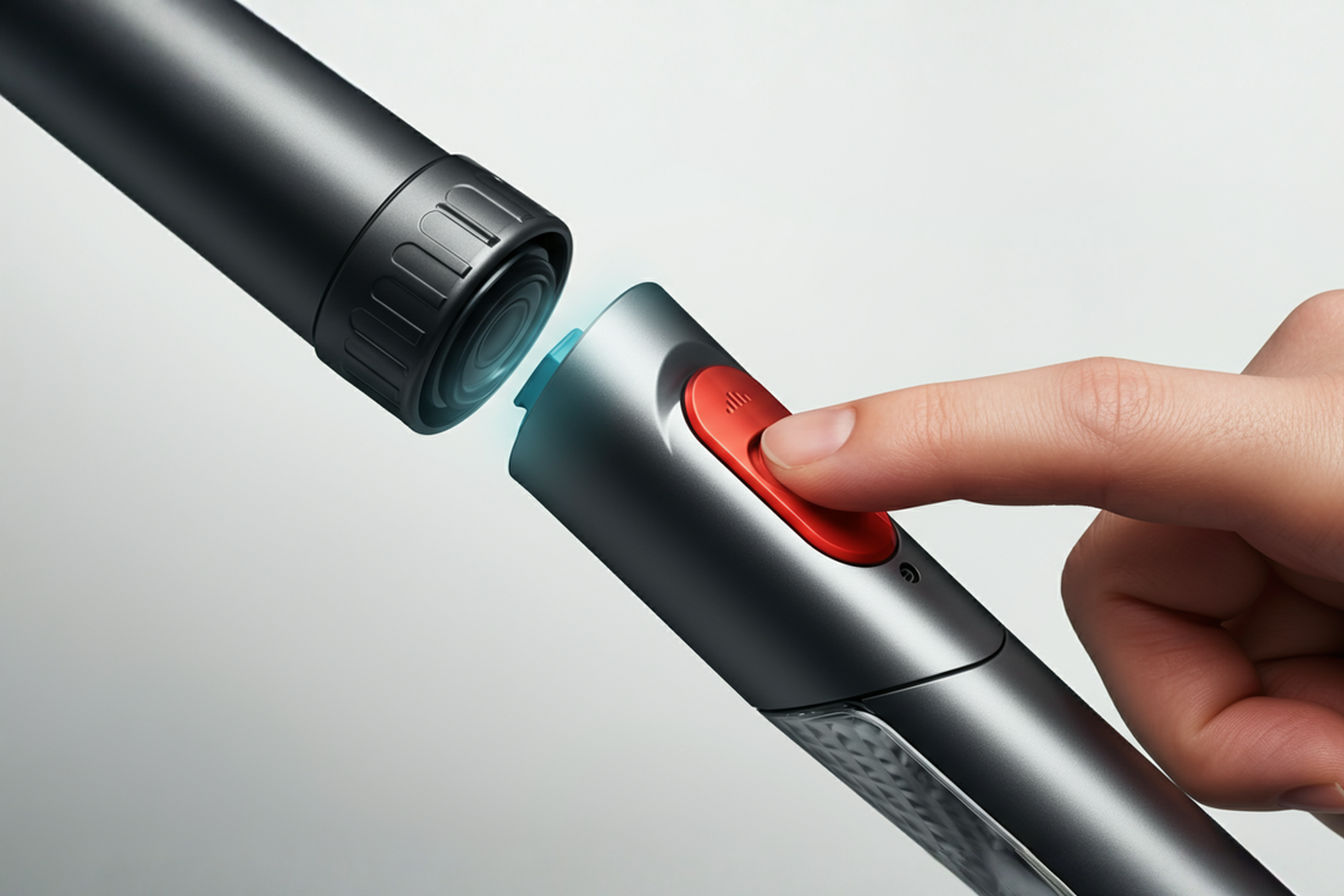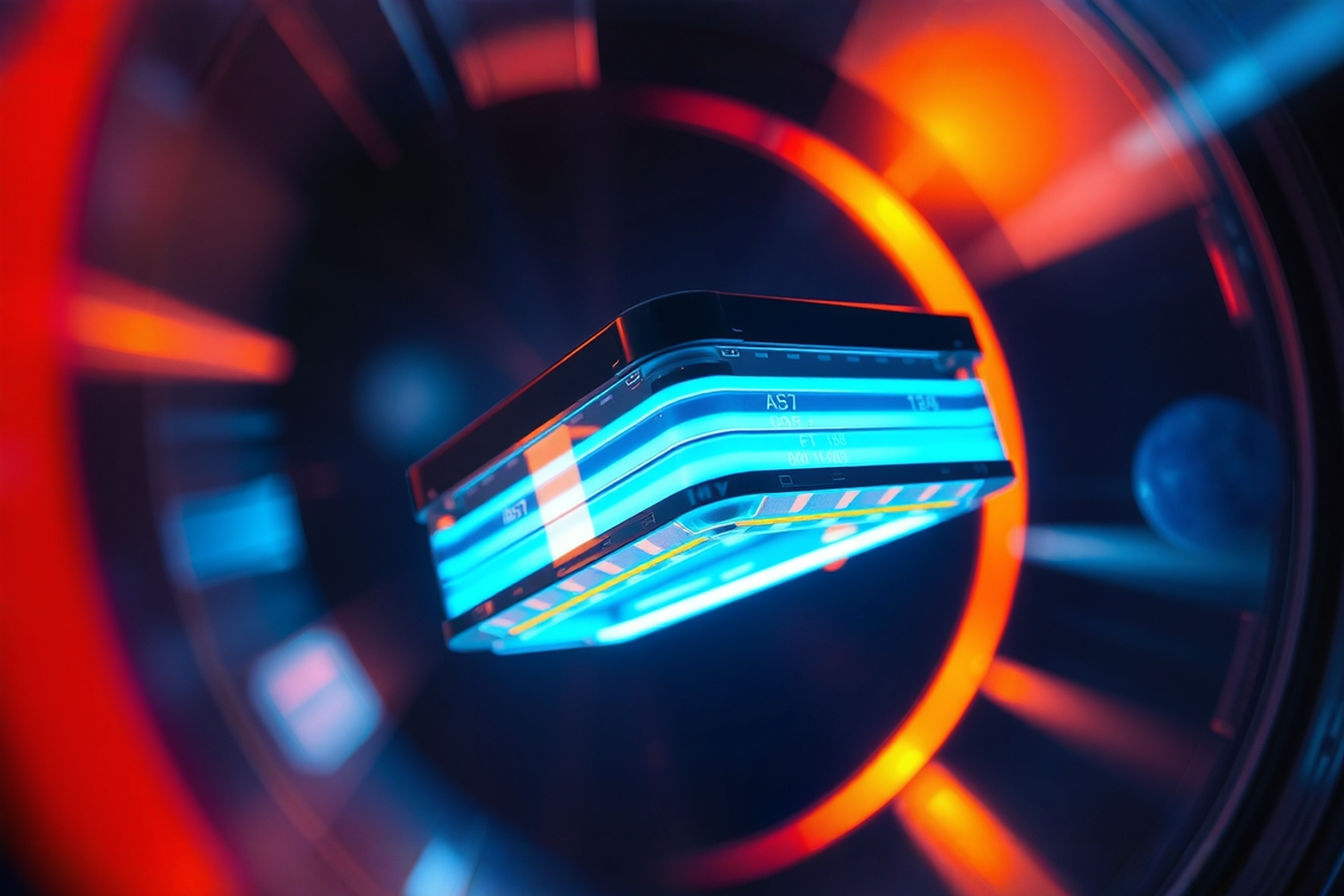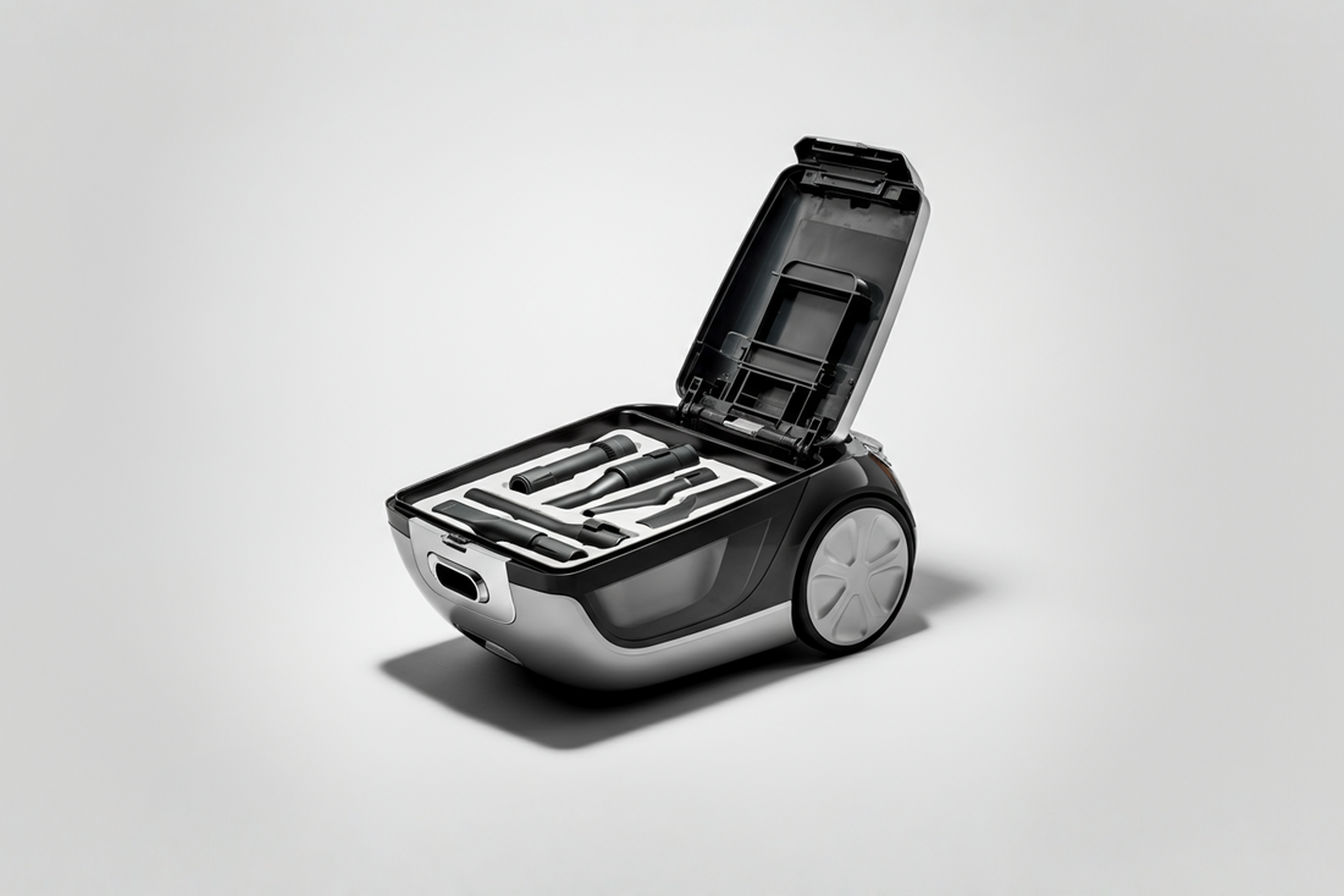Self-Maintaining Vacuum Systems: The Coming Era of Filter-Free Design
Self-maintaining vacuum systems eliminate filter replacements while delivering consistent performance. This technological revolution promises to transform our relationship with household cleaning through smart technology and innovative design.
This post may contain affiliate links. If you make a purchase through these links, we may earn a commission at no additional cost to you.
The humble vacuum cleaner has come a long way since its invention in the early 1900s. What began as a bulky, noisy machine has evolved into an essential household tool found in nearly every home. Yet despite decades of innovation, most vacuum systems still rely on the same basic principle: sucking air through a filter to trap dust and debris. This design creates an inherent limitation – as filters collect dirt, they gradually clog, reducing suction power and requiring regular maintenance or replacement.
Enter the era of self-maintaining vacuum systems – a revolutionary approach that promises to eliminate the hassle of filter cleaning and replacement while delivering consistent performance. These next-generation cleaning devices leverage cutting-edge technology to separate debris from airflow without traditional filters, allowing them to maintain peak performance with minimal human intervention.
This technological shift represents more than just a convenient upgrade. It marks a fundamental rethinking of how vacuum systems operate, promising benefits that extend from improved cleaning efficiency to reduced environmental impact. As we’ll explore, this emerging class of vacuum technology could transform our relationship with one of our most common household appliances.
The Evolution of Vacuum Technology
From Bags to Cyclones: A Brief History
The story of vacuum technology begins with manual carpet beaters and evolves through several key phases:
- Early 1900s: The first electric vacuum cleaners used simple bag filters to collect dust.
- 1950s-1980s: Innovations focused on improving motors and creating more effective disposable bags.
- 1980s: James Dyson introduced the first bagless vacuum using cyclonic separation.
- 2000s: HEPA filtration became standard for allergy sufferers, while robotic vacuums entered the market.
- 2010s: Smart features and connectivity began appearing in premium models.
- 2020s: The emergence of truly self-maintaining systems with minimal user intervention.
The Filter Problem
Traditional vacuum designs face several inherent challenges:
- Performance degradation: As filters collect dust, airflow decreases – reducing cleaning effectiveness until the filter is changed or cleaned.
- Maintenance burden: Regular filter cleaning or replacement adds to the cost and hassle of ownership.
- Environmental impact: Disposable filters contribute to landfill waste.
- Indoor air quality concerns: Improperly maintained filters can release trapped particles back into the home.
These limitations have persisted despite numerous innovations in materials and designs. According to industry research, over 60% of vacuum owners report noticeable performance drops between filter changes, and approximately 25% admit to forgetting or delaying filter maintenance.
The Cyclonic Revolution
James Dyson’s cyclonic separation technology represented the first major shift away from traditional filtration. By spinning incoming air at high speeds, these systems use centrifugal force to separate dust and debris from the airstream without relying entirely on physical filters.
This technology provided several advantages:
- Maintained more consistent suction power
- Eliminated the need for replacement bags
- Allowed users to see when the dust container needed emptying
However, even cyclonic systems typically retained some form of filter to capture the finest particles, requiring periodic cleaning or replacement.
Understanding Filter-Free Technology
The Core Principles
To understand how truly filter-free vacuum systems work, we need to examine the physical principles they employ. These systems typically rely on a combination of:
- Multi-stage cyclonic separation: Creating multiple vortices that separate particles of different sizes.
- Centrifugal compaction: Forcefully pressing collected debris into compact masses.
- Electrostatic precipitation: Using electrical charges to attract and capture microscopic particles.
- Self-cleaning mechanisms: Automated systems that remove accumulated debris from critical components.
The goal is to capture particles of all sizes without using traditional mesh or paper filters that inevitably clog over time.
How Cyclonic Separation Really Works
When air enters a cyclonic separator, it’s forced into a spiral pattern. As this spinning air moves through the chamber:
- Centrifugal force pushes heavier particles toward the outer walls
- These particles lose momentum and fall into a collection bin
- Cleaner air continues through the system’s center
Advanced multi-cyclonic systems use a series of increasingly smaller cyclones to capture progressively finer particles. The primary cyclone removes larger debris, while secondary and tertiary cyclones handle smaller particles down to microscopic sizes.
In the most advanced systems, the final air passing through may contain only particles smaller than 0.3 microns – comparable to the filtration efficiency of HEPA filters.
Beyond Cyclones: Alternative Separation Methods
While cyclonic technology forms the foundation of most filter-free systems, manufacturers have developed additional methods to enhance performance:
- Water-based separation: Some systems pass air through water chambers that trap fine particles.
- Electrostatic collection: Electrically charging particles so they stick to collection plates.
- Inertial separation: Using sudden direction changes that particles can’t follow due to inertia.
- Vortex amplification: Creating intensified air movements that enhance separation efficiency.
These technologies can be combined in various ways to achieve comprehensive filtration without traditional filter media.
Key Technologies Enabling Self-Maintenance
Advanced Cyclonic Engineering
The latest generation of cyclonic separators represents a significant advance over earlier designs:
- Hyperconic™ chambers: Ultra-high-speed vortices that generate forces exceeding 150,000 G.
- Micro-cyclone arrays: Systems containing hundreds of tiny cyclones that remove particles down to 0.5 microns.
- Variable geometry cyclones: Systems that can adjust their internal shape to optimize for different debris types.
These designs achieve filtration efficiency comparable to HEPA filters while maintaining consistent airflow over time. For context, a system operating at 150,000 G subjects particles to forces 150,000 times greater than gravity – easily separating even the finest dust from the airstream.
Self-Cleaning Brush Mechanisms
One of the most maintenance-intensive components of traditional vacuums is the brush roll, which frequently becomes tangled with hair and fibers. New self-maintaining systems address this with:
- Anti-tangle combs: Integrated components that actively prevent hair wrapping.
- Automatic brush cleaning: Systems that periodically reverse brush direction to shed tangled materials.
- Self-sharpening blades: Built-in cutters that slice through wrapped hair and fibers.
For example, SharpSense™ technology used in some models can detect when the brush is tangled and activate a cleaning protocol, using a combination of reverse rotation and mechanical combs to clear obstructions without user intervention.
Smart Sensors and Autonomous Maintenance
The “brains” behind self-maintaining vacuum systems come from an array of sophisticated sensors:
- Particulate matter sensors: Detecting the concentration of dust in exhaust air.
- Airflow monitors: Measuring suction power in real-time.
- Acoustic sensors: Identifying changes in sound patterns that indicate obstructions.
- Fill-level detection: Determining when collection bins need emptying.
These sensors feed data to onboard processors that can:
- Trigger maintenance routines when performance drops
- Adjust suction power to optimize battery life and cleaning effectiveness
- Alert users only when human intervention is truly necessary
AI and Machine Learning Applications
The most advanced self-maintaining vacuums incorporate artificial intelligence to improve performance over time:
- Usage pattern recognition: Learning when and how the vacuum is typically used.
- Surface adaptation: Automatically adjusting to different floor types.
- Predictive maintenance: Anticipating when specific components will need attention.
- Cleaning optimization: Improving cleaning paths and techniques based on results.
These systems collect data during operation and continuously refine their algorithms to improve efficiency and effectiveness. Some models can even share anonymized data with manufacturers to enable fleet-wide improvements through software updates.
Benefits of Filter-Free Vacuum Systems
Maintenance Reduction and Convenience
The most immediate benefit of self-maintaining vacuum systems is the dramatic reduction in required user maintenance:
- No filter replacement: Eliminating the need to purchase and install new filters.
- Consistent performance: Maintaining full suction power without gradual degradation.
- Reduced monitoring: Less need to check system status and components.
- Extended service intervals: Professional maintenance needed less frequently.
For the average household, this can translate to saving 2-3 hours of maintenance time per year and eliminating the need to purchase replacement filters (typical cost: $20-60 annually).
Performance Consistency Over Time
Traditional vacuums experience a performance curve that peaks immediately after filter replacement and gradually declines until the next maintenance. Self-maintaining systems deliver consistent performance through:
- Stable airflow: Maintaining optimal suction power regardless of use duration.
- Reliable particle capture: Consistently removing the same spectrum of particle sizes.
- Predictable operation: Delivering the same cleaning results day after day.
Testing by independent laboratories has shown that while traditional vacuums may lose 20-30% of their suction power before filter maintenance, leading self-maintaining models show performance variations of less than 5% over extended periods.
Energy Efficiency Improvements
Beyond convenience, filter-free designs can deliver significant energy efficiency benefits:
- Reduced motor strain: Motors work more efficiently when airflow isn’t restricted by clogged filters.
- Optimized power usage: Smart systems can adjust power based on cleaning needs rather than compensating for filter resistance.
- Longer component life: Less strain on motors and other parts leads to extended operational lifespans.
Some manufacturers report energy consumption reductions of 15-25% compared to equivalent filter-based models, potentially saving $5-15 in electricity costs annually while reducing carbon footprint.
Environmental Impact and Sustainability
The environmental benefits of self-maintaining vacuums are substantial:
- Waste reduction: Eliminating disposable filters keeps non-biodegradable materials out of landfills.
- Resource conservation: Fewer replacement parts means less manufacturing impact.
- Longevity: Extended product lifespans reduce electronic waste.
- Efficiency: Lower energy consumption reduces carbon emissions.
A typical household using disposable vacuum filters contributes approximately 4-6 filters to landfills annually. Multiplied across millions of homes, the waste reduction potential is significant.
Current Market Leaders and Innovative Products
Pioneering Manufacturers
Several companies are leading the charge toward truly self-maintaining vacuum systems:
- Dyson: Building on their cyclonic technology with models featuring self-cleaning brush rolls and maintenance alerts.
- LG CordZero: Implementing self-emptying bins and wash stations for key components.
- Samsung Bespoke Jet: Creating complete cleaning stations that manage multiple maintenance tasks.
- Shark IQ: Developing self-emptying robots with self-cleaning brushrolls.
- Roborock: Pioneering self-washing mop systems alongside vacuum functionality.
These manufacturers have invested heavily in research and development, with patents related to self-maintenance technologies increasing by over 300% in the past five years.
Flagship Products and Distinctive Features
The current generation of self-maintaining vacuums offers various approaches to reducing user intervention:
- Dyson Gen5detect: Features a piezo sensor that counts and displays particles, with a specially designed brush that prevents hair tangle.
- LG CordZero All-in-One: Includes a self-emptying base station that also charges the vacuum and stores accessories.
- Samsung Jet Bot AI+: Combines self-emptying with AI-powered obstacle recognition and cleaning pattern optimization.
- Roborock S8 Pro Ultra: Offers self-washing, drying, and refilling of its mopping system alongside vacuum functionality.
These premium models typically range from $500 to $1,500, positioning them at the higher end of the consumer vacuum market.
Performance Comparisons
Independent testing has revealed significant performance differences between self-maintaining systems and traditional designs:
- Maintenance time: Average of 5-10 minutes monthly for traditional systems vs. 0-2 minutes for self-maintaining models.
- Consistent suction: Performance degradation of less than 5% between maintenances vs. 20-30% for filter-based systems.
- Fine particle capture: Comparable to HEPA filtration when properly maintained.
- Energy efficiency: 15-25% lower power consumption over time compared to filter-based equivalents.
While initial purchase prices are higher, the total cost of ownership over a 5-year period often favors self-maintaining systems when accounting for replacement filters and time value.
Technical Challenges and Solutions
Dust Separation Efficiency Challenges
Creating truly filter-free systems presents several technical hurdles:
- Ultra-fine particle capture: Particles smaller than 1 micron are challenging to separate without filters.
- Variable debris types: Different materials (pet hair, sand, flour, etc.) require different separation approaches.
- Maintaining separation during high-volume collection: Performance must remain consistent as the collection bin fills.
Manufacturers have addressed these challenges through:
- Multi-stage separation: Using sequential processes optimized for different particle sizes.
- Adaptive airflow: Systems that modify internal air paths based on detected debris types.
- Compaction technology: Mechanisms that compress collected debris to maintain bin capacity.
The most effective systems can now capture over 99.97% of particles as small as 0.3 microns – matching HEPA standards without traditional filter media.
Power Consumption Considerations
High-performance separation typically requires significant airflow velocity, creating power demands that must be carefully managed:
- Motor efficiency: Development of digital motors with precision control.
- Airflow optimization: Computational fluid dynamics to minimize resistance.
- Intelligent power management: Adjusting suction based on detected debris loads.
- Battery technology: Advanced lithium-ion cells with higher energy density.
These innovations have enabled cordless self-maintaining systems with run times exceeding 60 minutes while maintaining powerful suction throughout the cleaning cycle.
Size and Mobility Trade-offs
Incorporating self-maintenance features while keeping vacuums manageable has required creative engineering:
- Miniaturized separation systems: Reducing the size of cyclonic arrays while maintaining efficiency.
- Integrated base stations: Moving some maintenance functions to separate charging stations.
- Lightweight materials: Using advanced polymers and carbon fiber components.
- Modular designs: Allowing users to attach only the components needed for specific tasks.
The result is a new generation of vacuums that incorporate self-maintenance while remaining maneuverable enough for everyday use.
The Smart Home Integration
Connectivity Features
Modern self-maintaining vacuums increasingly function as connected devices within the smart home ecosystem:
- Wi-Fi connectivity: Enabling remote control and monitoring.
- Smart assistant compatibility: Integration with Alexa, Google Assistant, and Siri.
- Mobile apps: Providing detailed status reports and maintenance alerts.
- Over-the-air updates: Improving functionality through software enhancements.
These features allow users to monitor vacuum performance, receive maintenance alerts, and control cleaning schedules from anywhere.
Automated Cleaning Routines
Smart integration enables sophisticated automation beyond basic scheduling:
- Zone-based cleaning: Targeting specific areas based on need.
- Usage-adaptive scheduling: Automatically adjusting cleaning frequency based on detected dirt levels.
- Occupancy-aware operation: Running only when the home is empty.
- Weather-responsive cleaning: Increasing frequency during high-pollen seasons or after rainy days when more dirt is tracked in.
Some systems can even coordinate with other smart home devices – starting a cleaning cycle when the security system indicates everyone has left, or avoiding rooms where motion sensors detect someone is resting.
Data Collection and Analysis
The data gathered by connected vacuum systems provides unprecedented insights:
- Cleaning effectiveness maps: Showing which areas tend to accumulate more debris.
- Air quality monitoring: Tracking particulate levels throughout the home.
- System performance metrics: Monitoring suction power, battery health, and component status.
- Usage patterns: Analyzing cleaning frequency and duration.
This information helps optimize both the vacuum’s operation and the user’s cleaning habits, while providing early warning of potential maintenance needs despite the self-maintaining design.
Future Directions and Emerging Technologies
Next-Generation Materials
Materials science is opening new possibilities for filter-free vacuum systems:
- Superhydrophobic surfaces: Repelling dust particles to prevent adhesion to internal components.
- Self-cleaning nanocoatings: Materials that actively repel dust and debris.
- Shape-memory alloys: Components that can physically change form to dislodge accumulated debris.
- Advanced composites: Lighter, stronger materials that enable more powerful separation mechanisms.
Research at institutions like MIT and Stanford is exploring biomimetic materials that replicate the dust-shedding properties of lotus leaves and gecko feet, potentially creating truly self-cleaning surfaces.
Advanced Autonomy
The next frontier in self-maintenance lies in enhanced autonomy:
- Self-diagnosing systems: Vacuums that can detect and report specific component issues.
- Predictive maintenance: Algorithms that forecast when interventions will be needed before performance degrades.
- Auto-ordering supplies: Systems that can request their own replacement parts when needed.
- Self-repair capabilities: Limited ability to resolve common issues without human intervention.
These capabilities will further reduce the already minimal maintenance requirements of current self-maintaining systems.
Specialized Applications
The principles behind self-maintaining vacuum technology are expanding beyond household cleaning:
- Industrial systems: Factory applications requiring continuous operation without maintenance downtime.
- Medical environments: Healthcare settings where consistent air quality is critical.
- Aerospace applications: Low-gravity environments where traditional filtration is challenging.
- Hazardous material handling: Situations where human maintenance exposure should be minimized.
These specialized applications are driving innovation that will eventually benefit consumer products as well.
Environmental and Health Considerations
Air Quality Impacts
Self-maintaining vacuum systems offer significant indoor air quality benefits:
- Consistent filtration: Maintaining high-level particle capture without degradation between maintenance.
- Reduced re-emission: Preventing the release of captured particles that can occur with full filters.
- HEPA-equivalent performance: Capturing allergens and fine particulates effectively.
- Sealed systems: Preventing dust leakage during operation and maintenance.
Studies indicate that properly functioning vacuum filtration can reduce indoor particulate matter by 30-50% during regular use, with self-maintaining systems maintaining this performance level consistently.
Allergen Management
For allergy sufferers, self-maintaining vacuums provide particular benefits:
- Continuous high-efficiency capture: Maintaining optimal allergen removal consistently.
- Reduced exposure during maintenance: Minimizing contact with collected allergens.
- Comprehensive particle spectrum coverage: Capturing both large and microscopic allergens.
- System integrity: Preventing filter tears and leaks that can release allergens.
Medical research suggests that consistent high-efficiency vacuum filtration can reduce symptom severity in allergy sufferers by 15-30%, with self-maintaining systems helping ensure this benefit doesn’t diminish between maintenance cycles.
Sustainability Considerations
Beyond filter waste, self-maintaining vacuum systems present other environmental considerations:
- Longevity: Designed for extended operational life, reducing electronic waste.
- Repairability: Many models feature modular designs that facilitate repairs rather than replacement.
- Energy consumption: Optimized power usage reduces carbon footprint.
- Material selection: Increasing use of recycled and recyclable components.
Leading manufacturers have embraced lifecycle assessment methodologies to reduce environmental impact across the product lifespan, from manufacturing through disposal.
Consumer Considerations and Adoption Factors
Cost Analysis and Return on Investment
Self-maintaining vacuum systems typically command premium prices, raising questions about value:
- Initial investment: $500-1,500 for leading models vs. $100-300 for traditional vacuums.
- Operational savings: $20-60 annually in filter replacements, plus energy savings.
- Time value: 2-3 hours saved annually on maintenance.
- Lifespan considerations: Potentially longer operational life due to consistent performance and reduced component strain.
For many households, the return on investment period is 3-5 years, after which the self-maintaining system provides ongoing savings.
Ideal Use Cases
Self-maintaining vacuums offer particularly compelling benefits for certain situations:
- High-traffic homes: Where frequent cleaning necessitates more regular filter maintenance.
- Pet owners: Dealing with hair and dander that quickly clog traditional filters.
- Allergy sufferers: Requiring consistent high-efficiency filtration.
- Busy households: Where maintenance tasks are easily forgotten or delayed.
- Smart home enthusiasts: Seeking integrated, automated cleaning solutions.
These scenarios can significantly shorten the ROI period and maximize the benefits of self-maintaining technology.
Current Limitations
Despite their advantages, today’s self-maintaining vacuums still have limitations:
- Purchase price: Significantly higher initial investment.
- Size and weight: Often heavier than simpler models.
- Complexity: More components that could potentially fail.
- Power requirements: Some systems need specialized high-amperage outlets for base stations.
- Learning curve: More features and settings to understand and optimize.
As with many technological advances, these limitations will likely diminish as the technology matures and production scales increase.
Conclusion
The emergence of truly self-maintaining vacuum systems represents more than just a convenient upgrade – it marks a fundamental shift in how we interact with household technology. By eliminating the maintenance cycle of traditional vacuums, these systems deliver consistent performance while reducing waste, saving time, and potentially improving indoor air quality.
While current self-maintaining vacuums still command premium prices, their total cost of ownership often compares favorably to traditional systems when considering the expenses of replacement filters, electricity, and maintenance time over several years. As manufacturing scales increase and technologies mature, we can expect these systems to become more affordable and widespread.
The principles driving this innovation – automated maintenance, smart monitoring, and filter-free operation – are likely to expand beyond vacuum cleaners to other household systems, potentially creating homes that require significantly less routine maintenance overall. This shift represents a meaningful improvement in quality of life, particularly for busy households, allergy sufferers, and those with limited mobility.
As we look to the future, the truly self-maintaining vacuum may be remembered as one of the first household devices to cross the threshold from requiring regular human maintenance to truly autonomous operation – a small but significant step toward the long-promised smart home that actually reduces our maintenance burden rather than adding to it.


